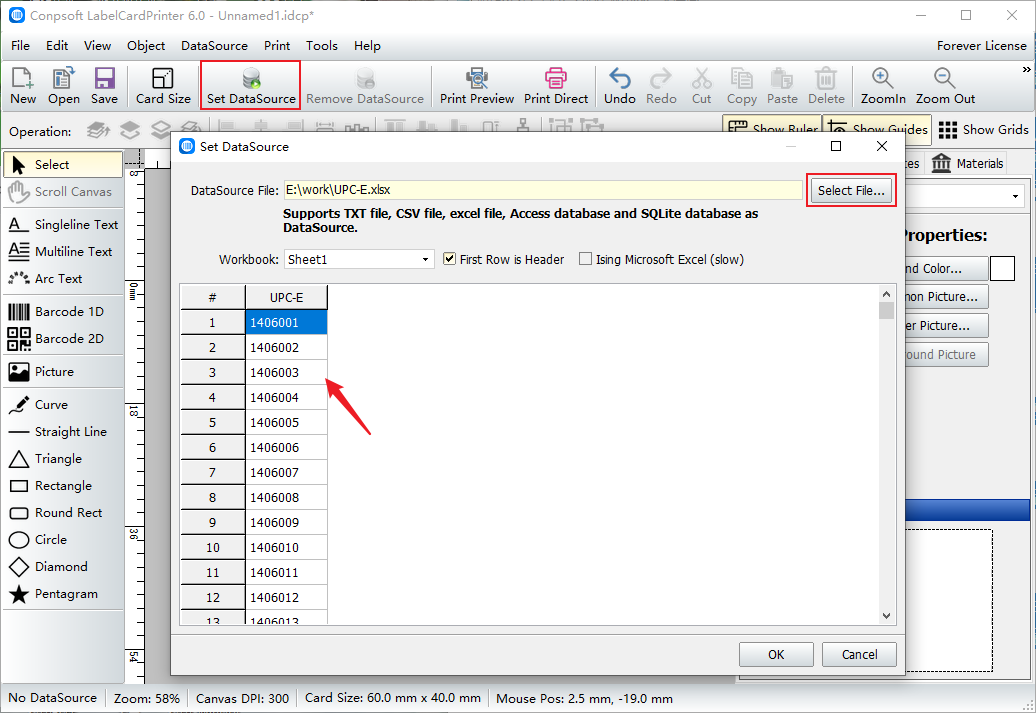Why is the UPC-E code not displayed when it is created?
Recently, a user reported to us that when he was making UPC-E barcode using barcode labeling software, the barcode was not displayed after he entered the barcode data. In fact, this is the setting of the problem, the following we will be specific to this problem to explain how to avoid such a situation.
The UPC-E barcode data must start with 0 or 1. The middle 6 digits are data characters, and the last digit is a check digit calculated from the previous digits. Not random input, is automatically generated by the bar code software. To put it simply, the UPC-E bar code can only encode numbers, not letters. As shown in the figure below, if we do not set the data start bit to 0 or 1, then the bar code will not be displayed.

To create UPC-E bar codes in batches, select Import database. Click Set Data Source on the top of the software. Select the data source type based on the type of the database file and click Select File to import the database to the software. As can be seen from the figure below, the starting bit of the bar code is 1.

Select Bar Code Tool on the left of the software, draw a bar code on the label, select UPC-E as the type of the bar code, and insert the data source field.

After the bar code is generated, you can set the font and size of the bar code data on the right of the software. Click [Print Preview], select the paper and set the layout according to your needs. Once the Settings are complete, you can start printing.

After understanding the UPC-E barcode related knowledge, when making this type of barcode in the barcode label printing software, you will know how to modify the barcode data. In addition, when making the UPC-E barcode, if no specific parity bit is entered (that is, only 7 data bits are entered), the software automatically generates the parity bit.